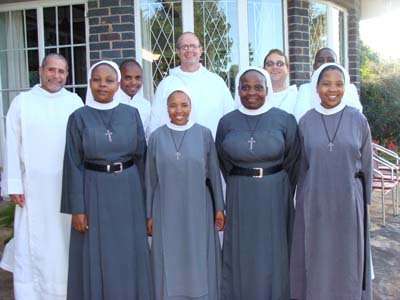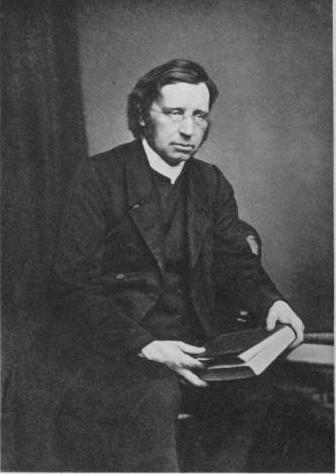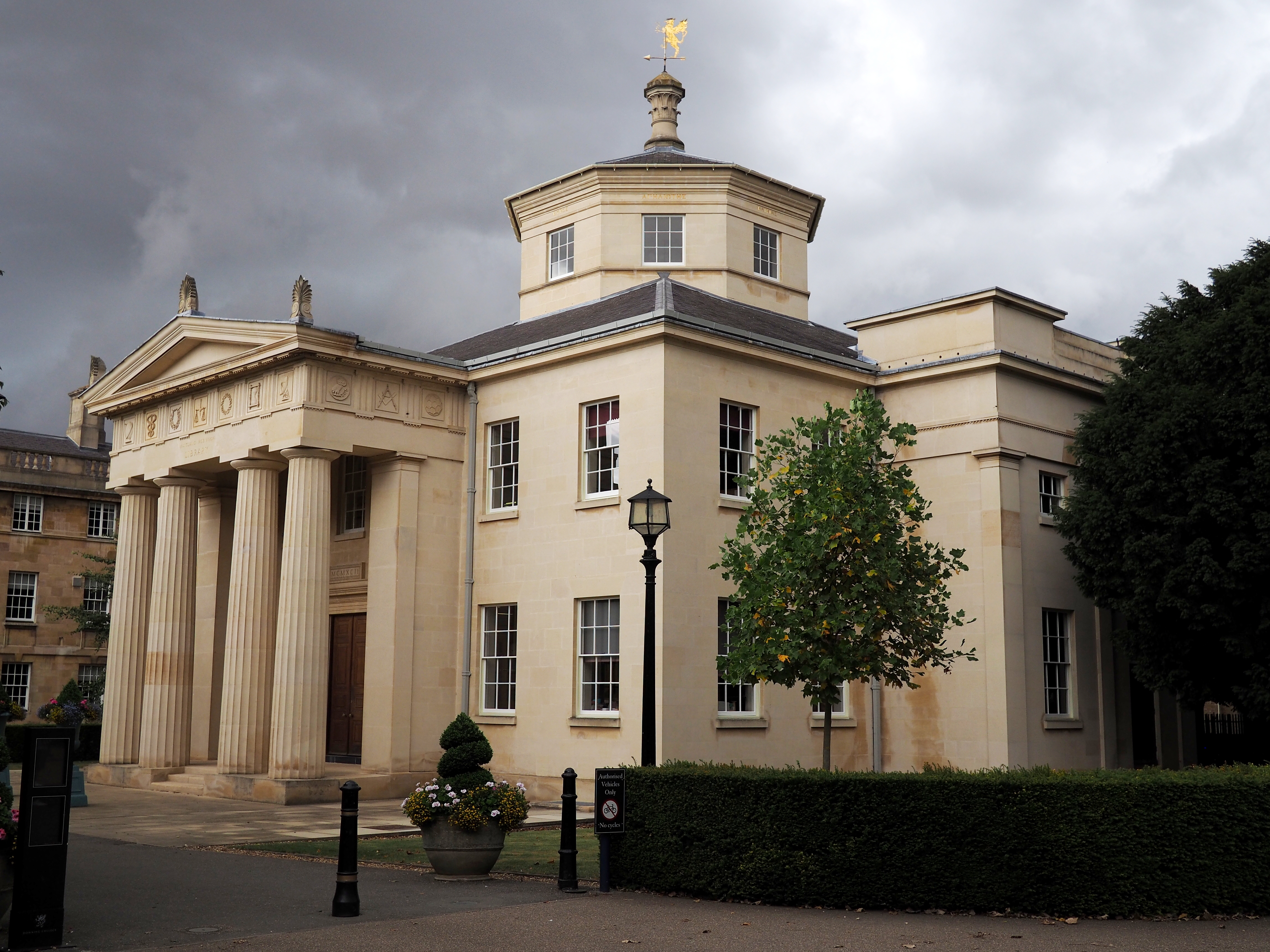|
John Mason Neale
John Mason Neale (24 January 1818 – 6 August 1866) was an English Anglican priest, scholar and hymnwriter. He worked and wrote on a wide range of holy Christian texts, including obscure medieval hymns, both Western and Eastern. Among his most famous hymns is the 1853 ''Good King Wenceslas'', set on Boxing Day. An Anglo-Catholic, Neale's works have found positive reception in high-church Anglicanism and Western Rite Orthodoxy. Life Neale was born in London on 24 January 1818, his parents being the clergyman Cornelius Neale and Susanna Neale, daughter of John Mason Good. A younger sister Elizabeth Neale (1822–1901) founded the Community of the Holy Cross. He was educated at Sherborne School, Dorset, and Trinity College, Cambridge, where (despite being said to be the best classical scholar in his year) his lack of ability in mathematics prevented him taking an honours degree. Neale was named after the Puritan cleric and hymn writer John Mason (1645–94), of whom his mothe ... [...More Info...] [...Related Items...] OR: [Wikipedia] [Google] [Baidu] |
The Reverend
The Reverend is an style (manner of address), honorific style most often placed before the names of Christian clergy and Minister of religion, ministers. There are sometimes differences in the way the style is used in different countries and church traditions. ''The Reverend'' is correctly called a ''style'' but is often and in some dictionaries called a title, form of address, or title of respect. The style is also sometimes used by leaders in other religions such as Judaism and Buddhism. The term is an anglicisation of the Latin ''reverendus'', the style originally used in Latin documents in medieval Europe. It is the gerundive or future passive participle of the verb ''revereri'' ("to respect; to revere"), meaning "[one who is] to be revered/must be respected". ''The Reverend'' is therefore equivalent to ''The Honourable'' or ''The Venerable''. It is paired with a modifier or noun for some offices in some religious traditions: Lutheran archbishops, Anglican archbishops, and ... [...More Info...] [...Related Items...] OR: [Wikipedia] [Google] [Baidu] |
John Mason Good
John Mason Good (25 May 1764 – 2 January 1827), English writer on medical, religious and classical subjects, was born at Epping, Essex. John Good's parents were the Nonconformist minister Revd Peter Good and Sarah Good, the daughter of another Nonconformist minister, Revd Henry Peyto of Great Coggeshall. John Mason Good was named after the Puritan clergyman and hymn writer John Mason (1645-1694), of whom his mother Sarah was a descendant. Good attended a school at Romsey kept by his father. At about the age of 15 John Good was apprenticed to a surgeon-apothecary at Gosport. In 1783 he went to London to practice his medical studies. In the autumn of 1784, he began to practice as a surgeon at Sudbury in Suffolk. There he was an acquaintance of Nathan Drake, a fellow writer and student of Shakespeare. In 1793 Good removed to London, where he entered into partnership with a surgeon and apothecary. But the partnership was soon dissolved, and to increase his income, he began to ... [...More Info...] [...Related Items...] OR: [Wikipedia] [Google] [Baidu] |
Trinity College (Connecticut)
Trinity College is a Private university, private Liberal arts colleges in the United States, liberal arts college in Hartford, Connecticut. Founded as Washington College in 1823, it is the second-oldest college in the state of Connecticut. Coeducational since 1969, the college enrolls 2,235 students. Trinity offers 41 majors and 28 interdisciplinary minors. The college is a member of the New England Small College Athletic Conference (NESCAC). History Early history Thomas Church Brownell, Bishop Thomas Brownell opened Washington College in 1824 to nine male studentsAlbert E. Van Dusen, ''Connecticut" (1961) pp 362-63 and the vigorous protest of Yale University, Yale alumni. A 14-acre site was chosen, at the time about a half-mile from the city of Hartford. Over time Bushnell Park was laid out to the north and the east, creating a beautiful space. The college was renamed Trinity College in 1845; the original campus consisted of two Greek Revival buildings. One of the Gre ... [...More Info...] [...Related Items...] OR: [Wikipedia] [Google] [Baidu] |
Restoration Of Anglican Religious Orders
Anglican religious orders are communities of men or women (or in some cases mixed communities of both men and women) in the Anglican Communion who live under a common rule of life. The members of religious orders take vows which often include the traditional monastic vows of poverty, chastity and obedience, or the ancient vow of stability, or sometimes a modern interpretation of some or all of these vows. Members may be laity or clergy, but most commonly include a mixture of both. They lead a common life of work and prayer, sometimes on a single site, sometimes spread over multiple locations. Titles Members of religious communities may be known as monks or nuns, particularly in those communities which require their members to live permanently in one location; they may be known as friars or sisters, a term used particularly (though not exclusively) by religious orders whose members are more active in the wider community, often living in smaller groups. Amongst the friars and ... [...More Info...] [...Related Items...] OR: [Wikipedia] [Google] [Baidu] |
Society Of Saint Margaret
The Society of Saint Margaret (SSM) is an order of women in the Anglican Church. The Order is active in England, Haiti, Sri Lanka, and the United States of America, United States and formerly Scotland. History The Sisters of St Margaret were founded in 1855 by Dr John Mason Neale at Rotherfield, England. As their numbers increased, they moved into their first convent, Saint Margaret's in East Grinstead, Sussex.TheWeald.org St Margaret's Convent, Moat Road, East Grinstead. Retrieved 12 December 2011. The society began its overseas activities in 1873. St Margaret's, East Grinstead St Margaret's, East Grinstead, had a total of 201 inhabitants in 1881: 57 staff, six "Industrial Girl scholars", 69 "Orphanage scholars", and 60 "St Agnes School scholars". The 66 staff were made up of: 42 "Sisters of Mer ...[...More Info...] [...Related Items...] OR: [Wikipedia] [Google] [Baidu] |
Almshouse
An almshouse (also known as a bede-house, poorhouse, or hospital) was charitable housing provided to people in a particular community, especially during the medieval era. They were often targeted at the poor of a locality, at those from certain forms of previous employment, or their widows, and at elderly people who could no longer pay rent, and are generally maintained by a charity or the trustees of a bequest (alms are, in the Christian tradition, money or services donated to support the poor and indigent). Almshouses were originally formed as extensions of the church system and were later adapted by local officials and authorities. History Many almshouses are European Christian institutions though some are secular. Almshouses provide subsidised accommodation, often integrated with social care resources such as wardens. England Almshouses were established from the 10th century in Britain, to provide a place of residence for poor, old and distressed people. They were someti ... [...More Info...] [...Related Items...] OR: [Wikipedia] [Google] [Baidu] |
Sackville College
Sackville College is a Jacobean almshouse in town of East Grinstead, West Sussex, England. It was founded in 1609 with money left by Robert Sackville, 2nd Earl of Dorset. Throughout its history it has provided sheltered accommodation for the elderly. Foundation Robert Sackville left £1,000 for the building and a rent charge of £330, for the endowment of a 'hospital or college' for twenty-one poor men and ten poor women, to be under the patronage and government of his heirs. This may have been an imitation of Emanuel College, Westminster, founded by his aunt, Anne Fiennes, Lady Dacre. The building of the almshouse known as 'Sackville College for the Poor' at East Grinstead was commenced about 1616 by the executors, his brother-in-law, Lord William Howard, and Sir George Rivers of Chafford. It was occupied before 1622. :s:Sackville, Robert, second Earl of Dorset (DNB00) Most of the Sackville lands were soon alienated by the founder's son, and the buyers refused to acknowl ... [...More Info...] [...Related Items...] OR: [Wikipedia] [Google] [Baidu] |
Incumbent
The incumbent is the current holder of an official, office or position, usually in relation to an election. In an election for president, the incumbent is the person holding or acting in the office of president before the election, whether seeking re-election or not. In some situations, there may not be an incumbent at time of an election for that office or position (ex; when a new electoral division is created), in which case the office or position is regarded as vacant or open. In the United States, an election without an incumbent is referred to as an open seat or open contest. Etymology The word "incumbent" is derived from the Latin verb ''incumbere'', literally meaning "to lean or lay upon" with the present participle stem ''incumbent-'', "leaning a variant of ''encumber,''''OED'' (1989), p. 834 while encumber is derived from the root ''cumber'', most appropriately defined: "To occupy obstructively or inconveniently; to block fill up with what hinders freedom of motion or ... [...More Info...] [...Related Items...] OR: [Wikipedia] [Google] [Baidu] |
Cambridge Camden Society
The Cambridge Camden Society, known from 1845 (when it moved to London) as the Ecclesiological Society,History of the Society Ecclesiological Society was a learned society founded in 1839 by students at to promote "the study of |
Oxford Movement
The Oxford Movement was a movement of high church members of the Church of England which began in the 1830s and eventually developed into Anglo-Catholicism. The movement, whose original devotees were mostly associated with the University of Oxford, argued for the reinstatement of some older Christian traditions of faith and their inclusion into Anglican liturgy and theology. They thought of Anglicanism as one of three branches of the " one, holy, catholic, and apostolic" Christian church. Many key participants subsequently converted to Roman Catholicism. The movement's philosophy was known as Tractarianism after its series of publications, the ''Tracts for the Times'', published from 1833 to 1841. Tractarians were also disparagingly referred to as "Newmanites" (before 1845) and "Puseyites" (after 1845) after two prominent Tractarians, John Henry Newman and Edward Bouverie Pusey. Other well-known Tractarians included John Keble, Charles Marriott, Richard Froude, Robert Wilbe ... [...More Info...] [...Related Items...] OR: [Wikipedia] [Google] [Baidu] |
Downing College, Cambridge
Downing College is a constituent college of the University of Cambridge and currently has around 650 students. Founded in 1800, it was the only college to be added to Cambridge University between 1596 and 1869, and is often described as the oldest of the new colleges and the newest of the old. Downing College was formed "for the encouragement of the study of Law and Medicine and of the cognate subjects of Moral and Natural Science", and has developed a reputation amongst Cambridge colleges for Law and Medicine. Downing has been named one of the two most eco-friendly Cambridge colleges. History Upon the death of Sir George Downing, 3rd Baronet in 1749, the wealth left by his grandfather, Sir George Downing, 1st Baronet, who served both Cromwell and Charles II and built 10 Downing Street (a door formerly from Number 10 is in use in the college), was applied by his will. Under this will, as he had no direct issue (he was legally separated from his wife), the family fortune was ... [...More Info...] [...Related Items...] OR: [Wikipedia] [Google] [Baidu] |
John Mason (poet)
John Mason (1646?–1694) was a Calvinistic Anglican priest, poet and hymn-writer. Life He belonged to a clerical family living in the neighbourhood of Kettering and Wellingborough, Northamptonshire. He was educated first at Strixton in Northamptonshire, and was admitted a sizar of Clare Hall, Cambridge, on 16 May 1661, graduated B.A. in 1664, and M.A. in 1668. After acting as curate at Isham in Northamptonshire, he was presented on 21 October 1668 to become vicar of the village of Stantonbury in Buckinghamshire (then virtually deserted, having no vicarage, and he may really have been chaplain to Sir John Wittewronge); he left for the rectory of Water Stratford in the same county on 28 January 1674, presented by Viscountess Baltinglass, the daughter by his first marriage of Sir Peter Temple, 2nd Baronet. Under the influence of James Wrexham, a puritan preacher at Haversham, formerly vicar of Kimble Magna and of Woburn, Mason's thoughts turned to the prospect of the millenni ... [...More Info...] [...Related Items...] OR: [Wikipedia] [Google] [Baidu] |

.jpg)




.jpg)
